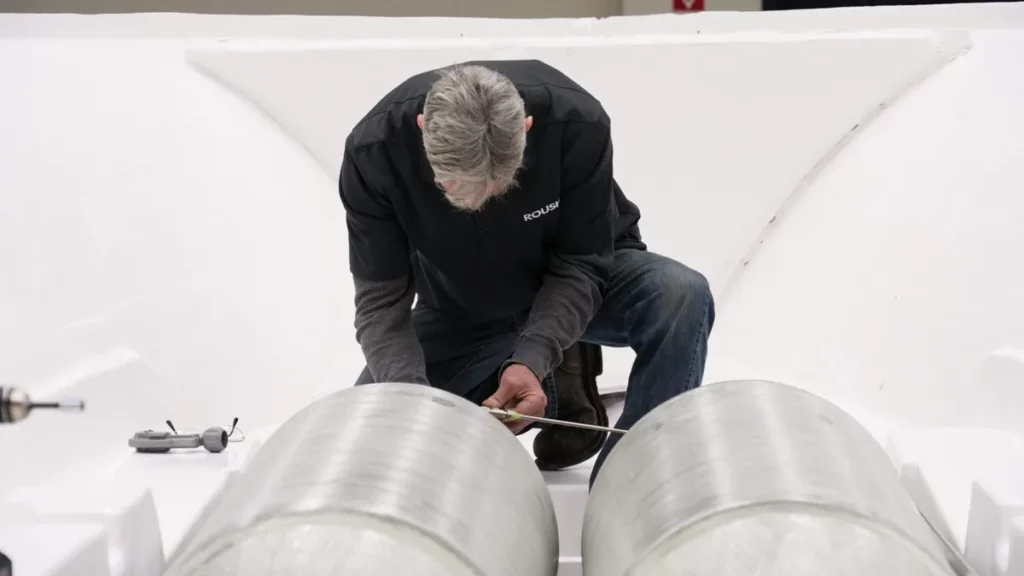In a groundbreaking move towards sustainable technologies, Yamaha Motor has introduced the world’s first hydrogen-powered outboard engine for recreational boats. This unveiling, which took place at the Miami International Boat Show, marks a significant milestone in the marine industry’s journey toward carbon neutrality.
Partnering with industry leaders Roush and Regulator Marine, Yamaha has developed an eco-friendly hydrogen-driven fuel system tailored to power the new outboard engine. The collaborative effort between these companies underscores a shared commitment to reducing carbon emissions associated with recreational boating.
The prototype fuel system, engineered in collaboration with Roush, harnesses the company’s extensive experience in hydrogen systems integration and research spanning over two decades. Matt Van Benschoten, Vice President of Advanced Engineering at Roush, emphasized applying the knowledge acquired over the years to this groundbreaking project.


| Description | Note | |
|---|---|---|
| Engine | V6 (based on Yamaha XTO) | Potential for other configurations in future models |
| Horsepower | 425 | Actual output might differ |
| Top Speed | 12+ knots | Can vary depending on boat weight and configuration |
| Emissions | Zero – produces only water vapor | |
| Noise Level | Significantly quieter than gasoline engines | Potential benefit for noise-sensitive marine environments |
| Weight | 20-30% heavier than gasoline counterpart | Due to heavier hydrogen fuel system |
ALSO READ: The World First Yamaha Hydrogen-Powered Golf Cart
Ben Speciale, President of Yamaha US Marine Business Unit, highlighted the company’s dedication to achieving carbon neutrality, with operational neutrality targeted by 2035 and product neutrality by 2050. Speciale stressed the importance of exploring diverse solutions, with hydrogen emerging as a promising avenue for innovation.

Regulator Marine, a longstanding partner of Yamaha, played a crucial role in adapting its hull to accommodate the hydrogen tanks necessary for the new outboard engine. Joan Maxwell, President of Regulator Marine, emphasized the significance of innovation in shaping the future of marine technology, expressing optimism about the potential of hydrogen as a viable fuel option.
| Feature | Specification (Estimated) | Notes |
|---|---|---|
| Fuel System | ||
| Fuel Type | Compressed Hydrogen | |
| Fuel Capacity | 50-100 kg | May vary depending on final design and hull integration |
| Refueling Method | High-pressure pump | |
| Travel Range | 100-200 nautical miles | Highly dependent on fuel capacity, boat size, speed, and environmental conditions |
| Refueling Infrastructure | Limited, expanding | Public and private initiatives aim to address this challenge |
The collaborative effort between Yamaha, Regulator, and Roush showcased integrating the fuel system and outboard engine into the modified hull, demonstrating the potential of hydrogen as a marine fuel. This initiative also initiates the assessment of marine standards for integrating hydrogen into vessels, paving the way for future advancements in the industry.


Yamaha’s hydrogen outboard project aligns with its commitment to embracing diverse technologies for carbon neutrality. In addition to hydrogen-powered engines, Yamaha recently announced plans to acquire Torqeedo, an electric outboard company, further diversifying its sustainable propulsion solutions.
ALSO READ: Jason Momoa Converts Classic 1929 Rolls-Royce Phantom II to an EV
The unveiling of the world’s first hydrogen-powered outboard engine signifies a major leap forward in the marine industry’s quest for sustainability. As Yamaha continues to lead the charge toward carbon neutrality, the collaboration with Roush and Regulator Marine sets a precedent for future innovations in marine technology. Stay tuned for further developments as Yamaha pioneers using hydrogen as a fuel source in marine environments.









